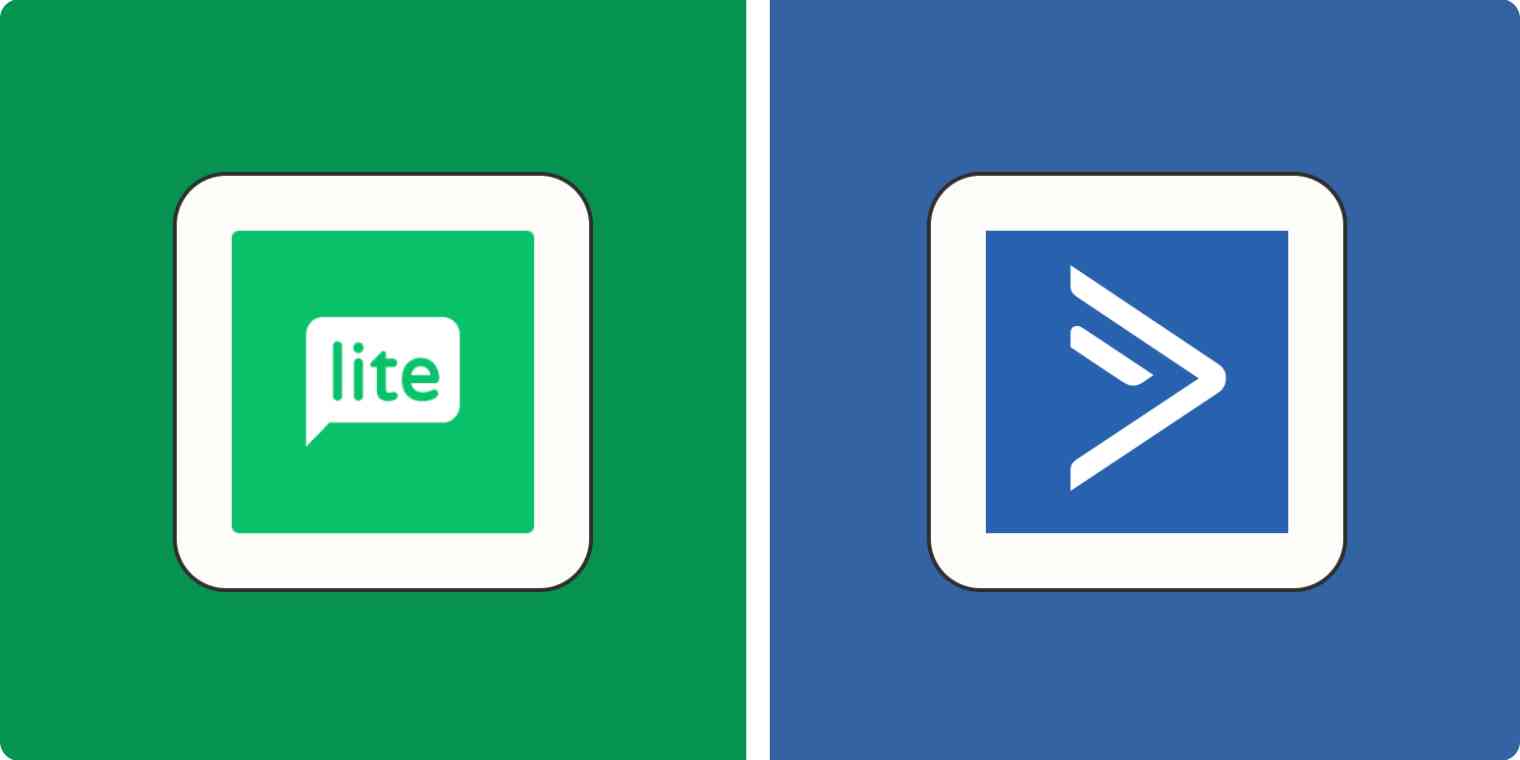Email marketing tools are rarely as different as MailerLite and ActiveCampaign: MailerLite prides itself on ease of use and caters to small businesses, while ActiveCampaign includes advanced automation features and a fully capable sales CRM.
Still, some people end up with the wrong tool. I was one of them: after using ActiveCampaign for around two years, I switched to MailerLite. In this article, I'll walk you through the pros and cons of each platform to help you decide which is best for you.
MailerLite vs. ActiveCampaign at a glance
A few years ago, I decided to use ActiveCampaign for its CRM, pipeline management, and automation features. With only a couple hundred email contacts, though, ActiveCampaign turned out to have more power than I needed. Switching to MailerLite worked well in my case—but only because I was willing to accept fewer features for the sake of simplicity.
Here's a high-level overview to help you decide which tool is right for you:
MailerLite is an email marketing tool built for small businesses, and it comes with one of the best free plans around. It's affordable and easy to use, while still offering solid design, automation, and analytics features.
ActiveCampaign is a marketing automation platform designed for enterprise customers, eCommerce brands, and sales teams. It's pricey but powerful, integrating email marketing, sales automation, and customer relationship management into a single tool.
| MailerLite | ActiveCampaign |
|---|---|---|
Pricing | ⭐⭐⭐⭐⭐ Over 4x cheaper than ActiveCampaign's top plan. If you're looking for the most value for your money, look no further. | ⭐⭐⭐ ActiveCampaign's top plans cost hundreds of dollars per month. But if you're in their target audience, it's a worthwhile investment. |
Ease of use | ⭐⭐⭐⭐⭐ Incredibly easy to learn. Everything from creating pop-ups to designing landing pages feels intuitive. | ⭐⭐ Basic functions like email campaigns are easy enough; advanced tasks often require reviewing FAQs and documentation. |
Automation | ⭐⭐⭐ Excellent value and good enough for most users; automation is included in the free plan. Some advanced features like multi-trigger workflows and A/B testing. | ⭐⭐⭐⭐⭐ Unparalleled email automation power and flexibility, with unique triggers to integrate behavior across the customer journey. |
Forms and landing pages | ⭐⭐⭐⭐ Simple to design and manage forms and landing pages; and only MailerLite can create full-fledged websites. | ⭐⭐⭐ Relatively complicated to create forms, and you can't design a full website. Landing page templates are impressive, though. |
eCommerce | ⭐⭐ Basic eCommerce integrations that work ok for small businesses but aren't ideal as you scale; MailerLite is better for digital products, though. | ⭐⭐⭐⭐ Highly integrated with eCommerce platforms; advanced features like predictive sending are ideal for cross-selling and upselling. |
Sales | ⭐⭐ Limited CRM features (but MailerLite doesn't claim to be a sales CRM replacement). It does have basic contact management features and integrates with tools like Salesforce and HubSpot. | ⭐⭐⭐⭐⭐ Powerful integrated CRM. Perfect for sales teams: you can easily integrate deal status and lead gen goals into your workflows. |
Analytics | ⭐⭐⭐ Everything you need (but nothing more). MailerLite's edge is its data visualization, which makes the numbers engaging and easy to understand. | ⭐⭐⭐⭐⭐ Endless analytics options. There are reports for everything: marketing revenue, conversion attribution, and pipeline activity—plus custom goal tracking. |
Integrations | ⭐⭐⭐⭐ 140+ integrations; also integrates with Zapier. | ⭐⭐⭐⭐⭐ 940+ integrations; also integrates with Zapier. |
MailerLite is significantly more affordable
Let's talk about pricing first: if you have a limited budget, your decision is about to get a lot easier.
ActiveCampaign has some entry-level plans, but its most advanced plans cost hundreds of dollars per month. After a free 14-day trial, you'll pay $39/month for 1,000 contacts on the entry-level Lite plan, which is missing many of ActiveCampaign's most appealing features like conditional content, pop-up forms, lead scoring, and eCommerce integrations. The $70/month Plus plan buys you access to those features, while the $187/month Professional plan gets you 2,500 contacts plus advanced features like AI-powered predictive sending, split automations, and attribution reporting.
ActiveCampaign also has a separate product category that doesn't exist at MailerLite: its Sales CRM. You can buy this separately or bundle it with ActiveCampaign's email marketing features for $482/month for 2,500 contacts.
If these prices feel eye-wateringly high to you, MailerLite is a great alternative: its most powerful plan is over 4x cheaper than the equivalent ActiveCampaign plan (and 10x cheaper than ActiveCampaign's marketing + sales CRM bundle). So if you don't need ActiveCampaign's enterprise-focused features or its sales and marketing muscle, MailerLite will save you a lot of money. Its robust "forever free" plan supports users until they hit 1,000 contacts and includes useful features like segmentation, email automation, landing pages, and pop-ups. Meanwhile, MailerLite's entry level Growing Business plan is $15/month for 1,000 subscribers, and its highest-priced Advanced plan is just $30/month.
MailerLite has a much quicker learning curve
MailerLite is much faster to learn than ActiveCampaign. The fact that it has fewer features certainly contributes to this, but another key factor is its approachable user interface. MailerLite is a slick, modern app with copious white space and simple navigation.
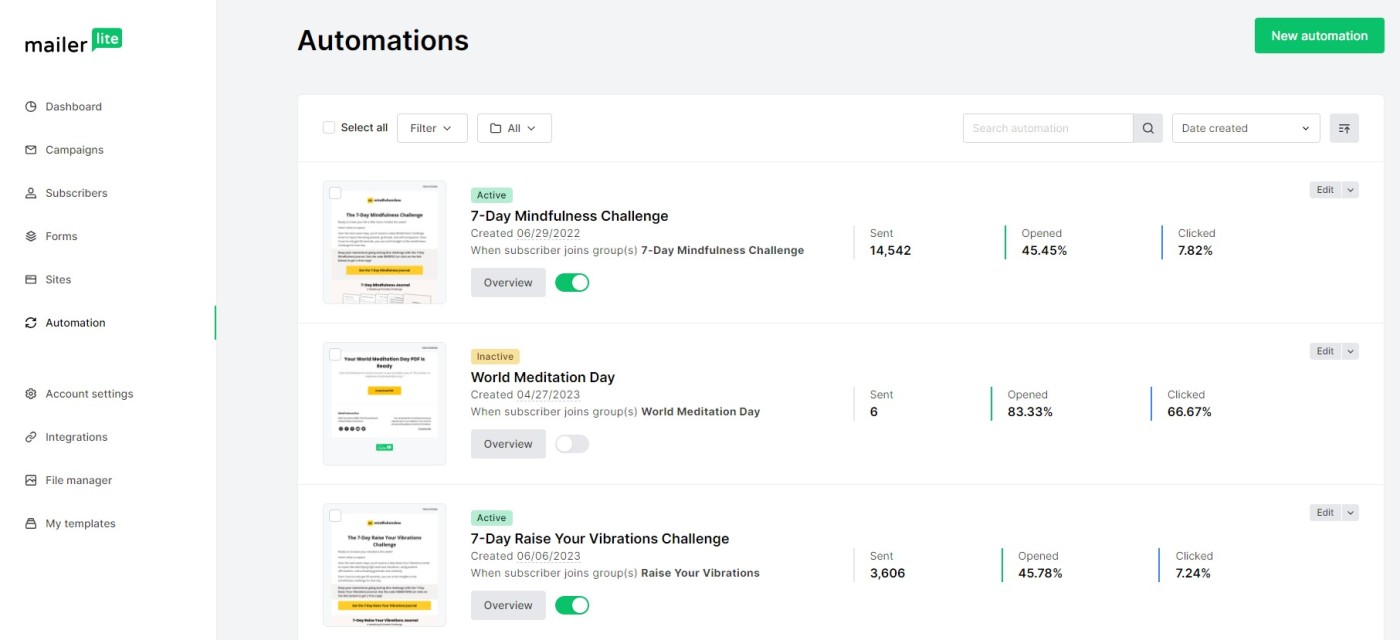
Meanwhile, ActiveCampaign is text-heavy, has dozens of features to navigate, and feels much more like enterprise software.

Using ActiveCampaign's basic features, like sending email campaigns, is straightforward enough. But in general, ActiveCampaign emphasizes power and customization over simplicity. It's the kind of tool you'll only get the most out of by searching through FAQs, documentation, and courses. Figuring out ActiveCampaign's capabilities can feel like a project unto itself: ActiveCampaign University has dozens of instructional courses to help you navigate the platform's features, while MailerLite Academy makes do with 10.
MailerLite is much more straightforward and intuitive, whether you're dragging and dropping an email design or creating automations. To speed things along, you can also use one of MailerLite's 70 customizable email templates. Everything from creating pop-ups to designing landing pages is designed to prioritize simplicity over complexity. For example, MailerLite's form builder uses one-click presets to help you choose between different form layouts and settings, while ActiveCampaign's form designer requires more jumping between tabs and customization.

ActiveCampaign offers more powerful and complex automations
ActiveCampaign's edge becomes evident as you start to explore more advanced features like automations.
That's not to say MailerLite's automation capabilities are poor; its features will be enough for most beginners, solopreneurs, and small businesses. MailerLite packs an impressive amount of flexibility into its lightweight platform: you can design automations that trigger when subscribers join a group, complete a form, or click a link. Fairly complex automations are possible, and prebuilt templates make them easy to design. For example, here's a MailerLite "winback" automation template that sends discount offers to subscribers who haven't engaged recently.
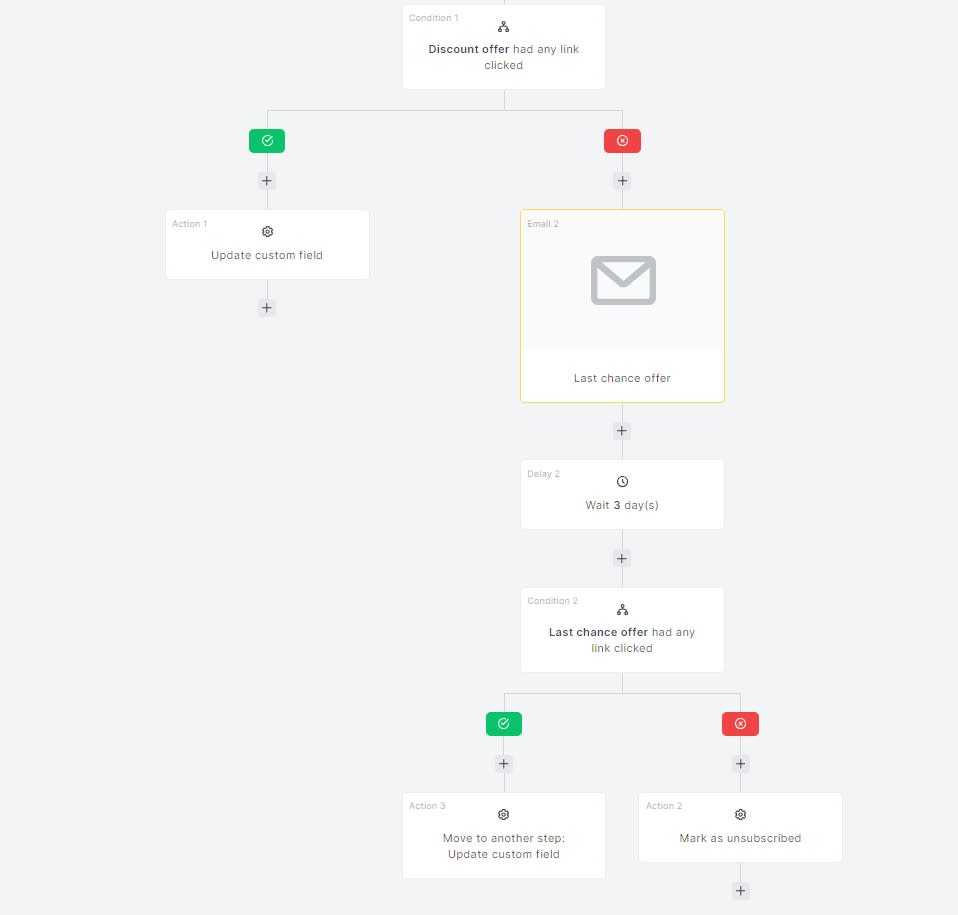
Although MailerLite's automation capabilities are serviceable, they're no match for what's possible with ActiveCampaign. The automation features offered by ActiveCampaign are seemingly endless: you can initiate automations with standard triggers, like when a customer subscribes to a list, but also advanced ones like web page is visited, replies to an email, enters a pipeline, and sentiment changes.
While there's certainly a learning curve to put this all together, ActiveCampaign has time-saving "recipes" that allow you to import common automations for popular industries. For example, realtors can swiftly deploy automations like Homebuyer Onboarding and Open House Follow-Up.
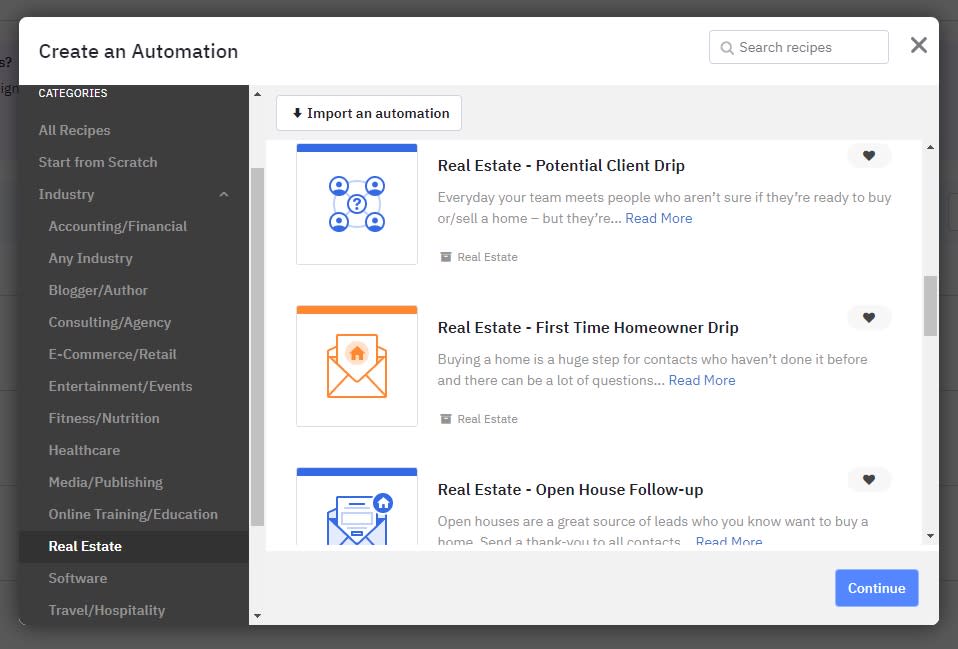
Here's an ActiveCampaign automation template for realtors who want to send an email drip to first-time homeowners.

The relative complexity of putting together an ActiveCampaign automation from scratch is somewhat offset by the hundreds of prebuilt templates you have access to. And taking the time to craft a custom automation can pay off handsomely if you use ActiveCampaign to automate tasks that were previously done manually.
As you start to create more and more automations, it can get tricky to figure out how customers flow from one to the next. ActiveCampaign's unique Automation Map feature gives you a bird's-eye view of how your various automations affect your customer journey.
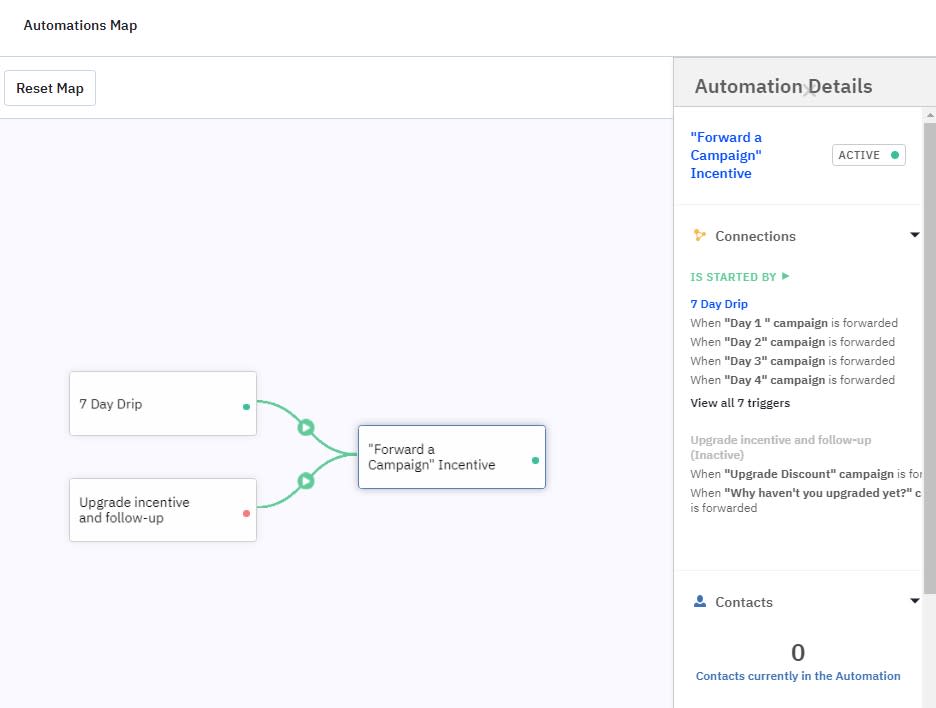
ActiveCampaign is better for eCommerce
MailerLite and ActiveCampaign can both integrate with eCommerce platforms, but if you're serious about eCommerce, ActiveCampaign is a better option.
MailerLite has a decent set of eCommerce tools, including integrations with major platforms like WooCommerce and Shopify. It also features automations for common eCommerce scenarios, like following up with customers who abandon their shopping carts. Here's what MailerLite's prebuilt abandoned cart email sequence looks like.

While MailerLite offers just a handful of eCommerce automations, ActiveCampaign offers dozens. Whether you need to send refund notifications, repurchase reminders, Black Friday emails, or requests for customer reviews, ActiveCampaign has automation templates designed to streamline your eCommerce processes. It also boasts advanced features like predictive sending, which can help you gauge when customers might be interested in repurchasing, as well as cross-selling and upselling workflows.
Meanwhile, ActiveCampaign's product catalog feature helps you fully integrate your eCommerce store with your automation sequences, making it easier to populate emails with hyper-relevant products.
Digital products are an exception to ActiveCampaign's eCommerce dominance. If your goal is to sell recurring subscriptions, paid newsletters, or digital products, you'll want to go with MailerLite, which allows you to create an entire website promoting your products and process payments via Stripe. MailerLite is no superstar in this area—that title belongs to ConvertKit—but ActiveCampaign simply isn't geared toward this kind of activity.
Sales teams will prefer ActiveCampaign
If you don't do any inbound or outbound sales, you can skip this section. Otherwise, read on: it might be the deciding factor in your decision to go with ActiveCampaign or MailerLite.
It's important to point out that MailerLite never claims to be a sales or CRM platform. That means it's not entirely fair to judge it by those standards; but even so, you'll need to consider this feature to understand how each platform fits into your marketing stack.
MailerLite does have some sales-friendly features—including a few that ActiveCampaign doesn't have, like the ability to deliver email campaigns by time zone. And by using integrations, you can tie MailerLite into your existing sales workflows on external CRM platforms like HubSpot, Intercom, Pipedrive, and Salesforce. While MailerLite is far from being a CRM, you can add notes to each subscriber, see basic user data, and keep track of subscriber interactions.
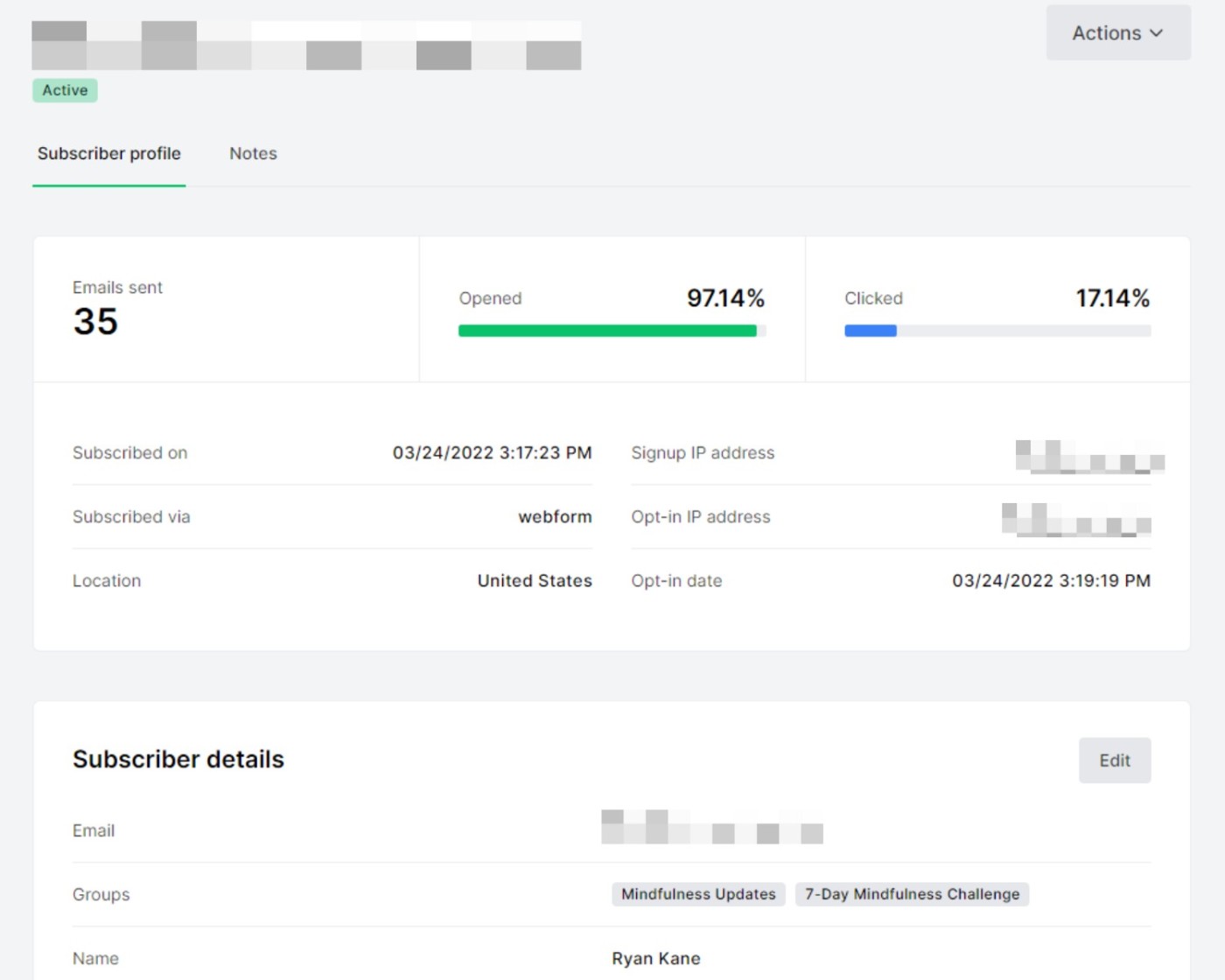
But anyone managing deals and sales pipelines will find ActiveCampaign much more useful. It offers its own powerful integrated CRM with features like predictive sending, one-on-one email personalization, behavioral-based triggers, lead scoring, and pipeline management. As a result, you can design reliable, time-saving workflows that adapt to sales-focused variables like deal status and lead activity.
ActiveCampaign's CRM lets you create contact-dependent tasks, set reminders, and trigger task-based automations. Let's say you're scheduling a call to review a sales proposal with a client, for example: using ActiveCampaign's built-in workflows, you can automatically send over sales collateral before the call, and then trigger a follow-up sequence afterward.
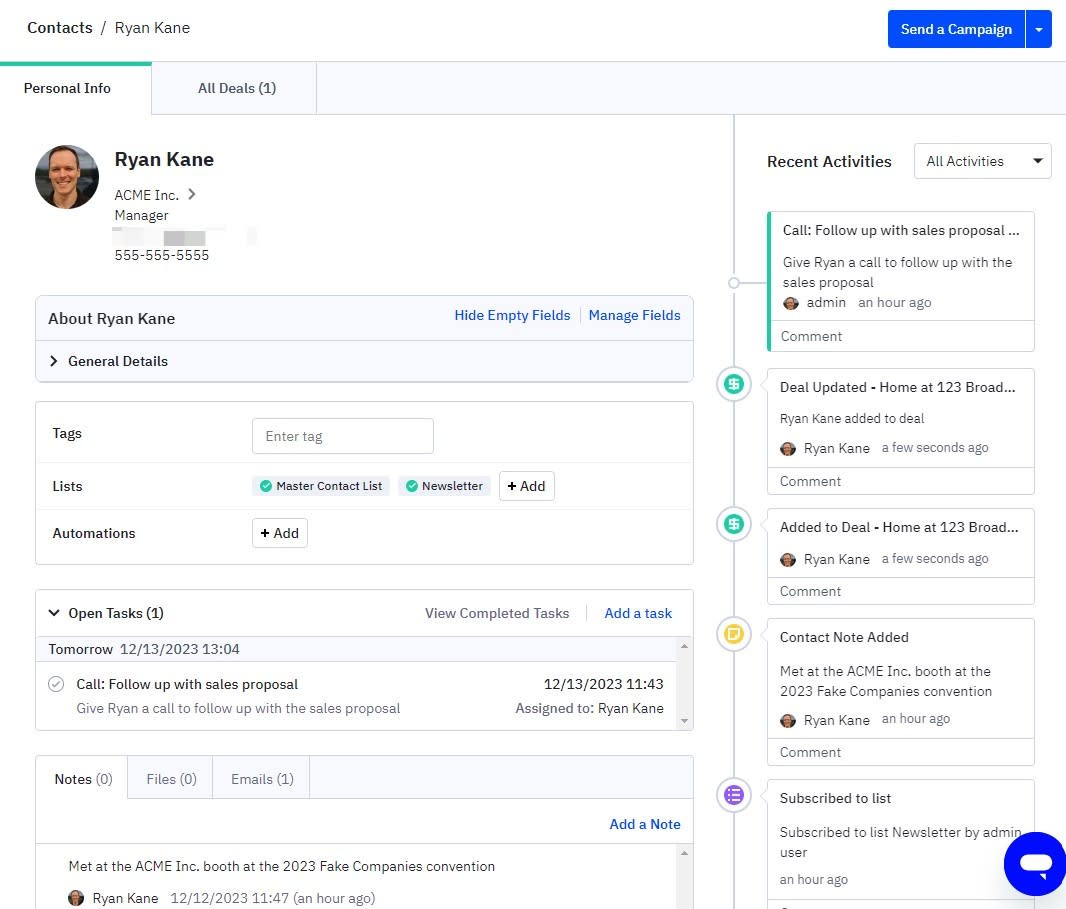
ActiveCampaign has more advanced reporting capabilities
When it comes to email analytics, both MailerLite and ActiveCampaign do the basics well. But if you need more powerful reporting options, ActiveCampaign is the clear winner.
Both platforms make it easy to see basic metrics like open rate, click rate, and bounce rate, as well as more advanced stats like user location and hourly open trends. And each offers some unique features: ActiveCampaign can track email forwards and replies, which helps you understand which leads are engaging more, while MailerLite offers email click maps to help visualize where recipients are engaging with each email.
MailerLite's edge is its data visualization, which turns complex numbers into attractive charts and makes the numbers easier to understand.
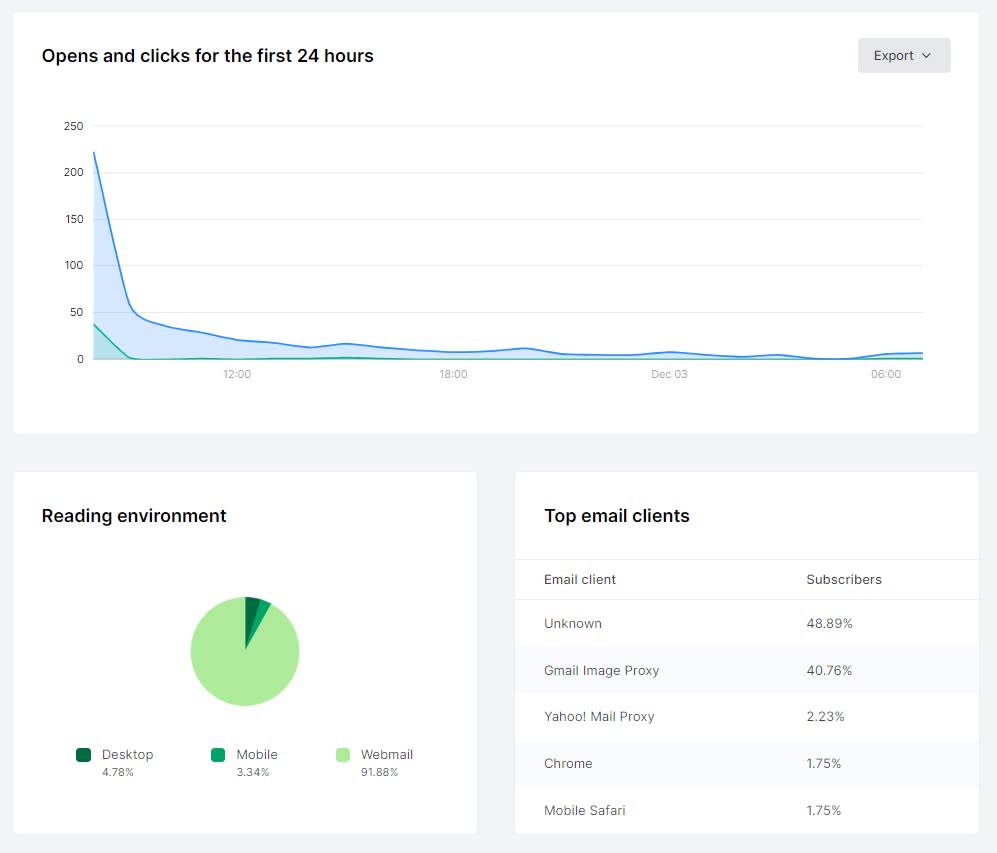
ActiveCampaign offers similar data (though it's not presented quite as beautifully). But it's the hands-down winner when it comes to the diversity of the reporting it offers: you can see reports for marketing revenue, conversion attribution, sales pipeline activity, and trends in your email list growth. And if all that isn't enough, you can create your own reports and view progress toward custom goals.
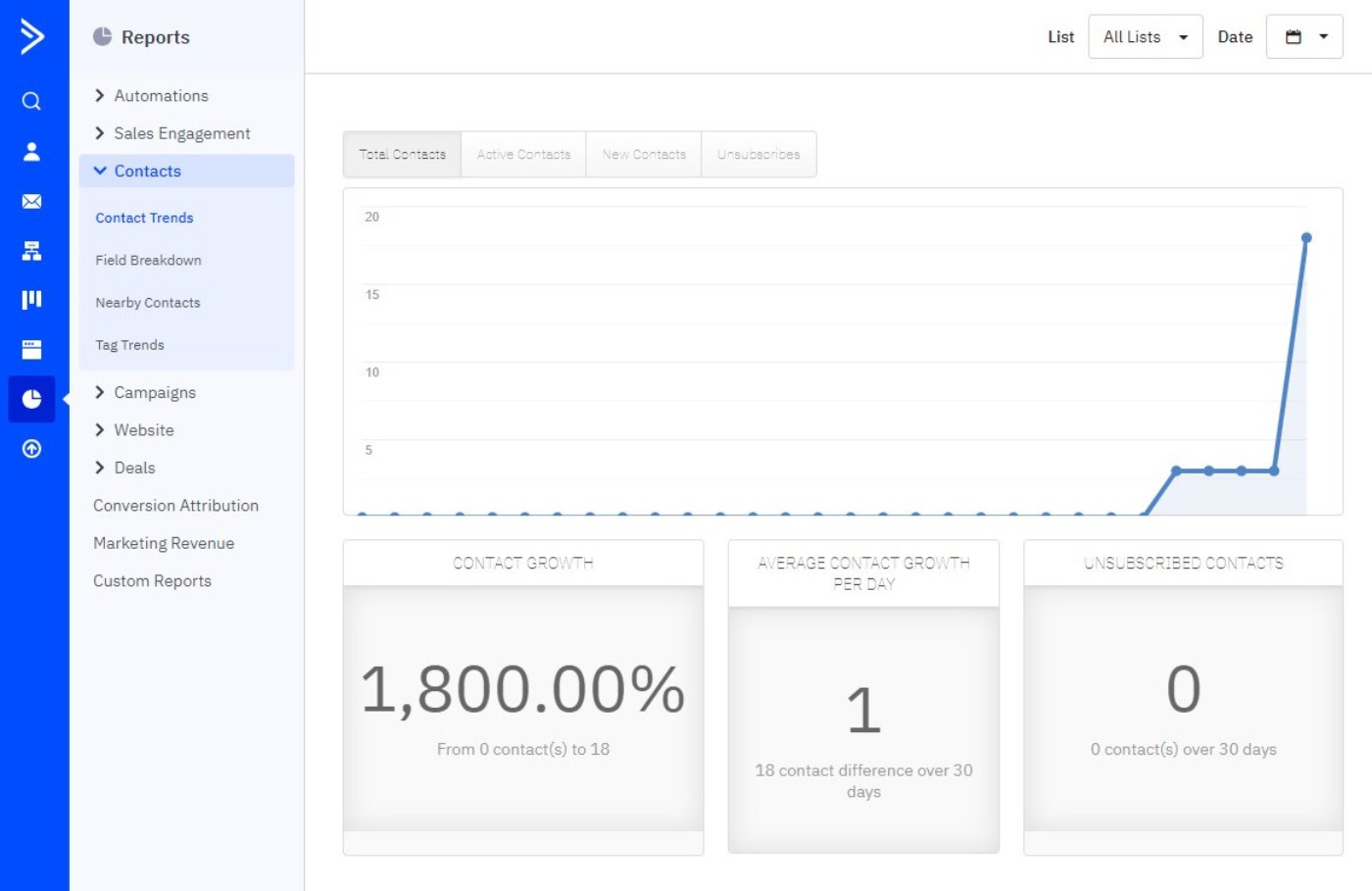
Both have a wide variety of integrations
At first glance, it looks like ActiveCampaign has MailerLite beat based on the sheer number of integrations it offers. ActiveCampaign's website lists a staggering 940+ apps, while MailerLite has a respectable 140+.
Fortunately, both MailerLite and ActiveCampaign integrate with Zapier, so you can connect them to nearly any app you can think of. Learn more about how to automate ActiveCampaign and how to automate MailerLite, or use one of these pre-made workflows to get started.
Add or update ActiveCampaign contacts for new Acuity Scheduling appointments
Add ActiveCampaign contacts to automation after PayPal successful sales
Create or update MailerLite subscribers from new Typeform entries
ActiveCampaign vs. MailerLite: Which should you choose?
Choose ActiveCampaign if you're looking for an all-in-one automation and CRM solution that streamlines your sales or eCommerce processes—as long as budget isn't a concern. You'll have access to best-in-class workflows that will save you time and boost your productivity.
Go with MailerLite if you want to save money, or if you value simplicity more than advanced features. You'll still get an impressive set of email automation features, and you'll be able to get up and running without much learning curve.
Related reading:
